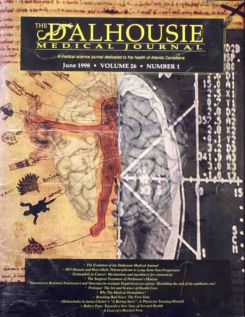Vancomycin-Resistant Enterococci and Vancomycin-Resistant Staphylococcus aureus: Heralding the end of the antibiotic era?
DOI:
https://doi.org/10.15273/dmj.Vol26No1.4422Abstract
The emergence of organisms resistant to commonly utilized antimicrobial agents has reached global epidemic proportions. In particular, nosocomial pathogens with antimicrobial resistant phenotypes, are presenting significant clinical difficulties. These difficulties arise due to limited efficacious antimicrobial agents available to treat patients infected with these organisms. Two organisms which currently represent major nosocomial pathogens include enterococci and Staphylococcus aureus. Both organisms exhibit antimicrobial resistant phenotypes which currently make clinical management difficult. Vancomycin-resistant enterococci (VRE) is endemic in many major US hospitals and outbreaks of this organism have been documented in Canada. More recently, isolates of vancomycin-resistant Staphylococcus aureus (VRSA) have been identified in Japan and the US. Vancomycin is often the last line antimicrobial available for treatment of infections caused by these organisms which have acquired resistance to virtually all other antimicrobials used. Therefore, infection control policies must be strengthened to contain the spread of these organisms. As well, these infection control policies must be utilized in conjunction with specific guidelines concerning antimicrobial usage to prevent the selection of new resistant organisms.
Downloads
How to Cite
Issue
Section
License
Authors who publish with this journal agree to the following terms:
- Authors retain copyright and grant the journal right of first publication with the work simultaneously licensed under a Creative Commons Attribution License that allows others to share the work with an acknowledgement of the work's authorship and initial publication in this journal.
- Authors are able to enter into separate, additional contractual arrangements for the non-exclusive distribution of the journal's published version of the work (e.g., post it to an institutional repository or publish it in a book), with an acknowledgement of its initial publication in this journal.
- Authors are permitted and encouraged to post their work online (e.g., in institutional repositories or on their website) prior to and during the submission process, as it can lead to productive exchanges, as well as earlier and greater citation of published work (See The Effect of Open Access).


